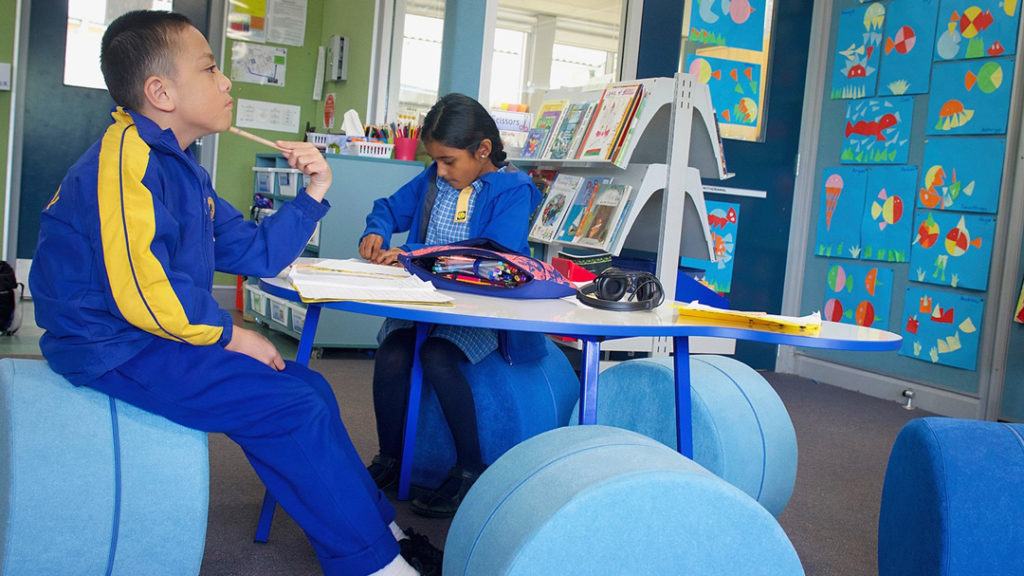Sitting on the edge of your seat is a sure sign of engagement!
At NorvaNivel, we design and manufacture seats, but not chairs. For those transitioning to our flexible learning spaces, questions can arise around seats without backs. From research and experience we know that seats without backs have many benefits. Read on for our top three reasons for creating backless seating.
POSTURE
Without a back, there’s nothing to slouch against. For this reason, backless seating aids in better posture. Our backless seats are ergonomically designed to position learners in an ideal way to aid in better posture. For example, our MISSOTT™ Cube Ottoman was designed to encourage a natural s-curve in the back. Since bad posture often begins in childhood, it is important that learners are practicing good posture while sitting and learning.
BLOOD FLOW
When you’re practicing good posture, there are many benefits. Your organs are aligned and functioning better. Your spine is relaxed, and thus, you’re not suffering from back pain. Another benefit is proper blood flow. When you have good posture, this improves circulation and breathing, which, in turn, gets oxygen to the brain faster!
ENGAGEMENT
With oxygen getting to the brain faster, this assists in better engagement. Since learners spend the majority of their days sitting, backless seats offer a more active seating option. Active seats allow learners to wobble, rock, and engage muscles while sitting. Since there is research to support a neurological link between movement and greater cognitive function, active seating helps to facilitate movement and learners to put thoughts and ideas into action. Research even shows that sitting forward in your seat is a physical representation of engagement.
Backless seating creates a dynamic and engaging learning environment. Learners are literally on the edge of their seats gaining and retaining their information!

